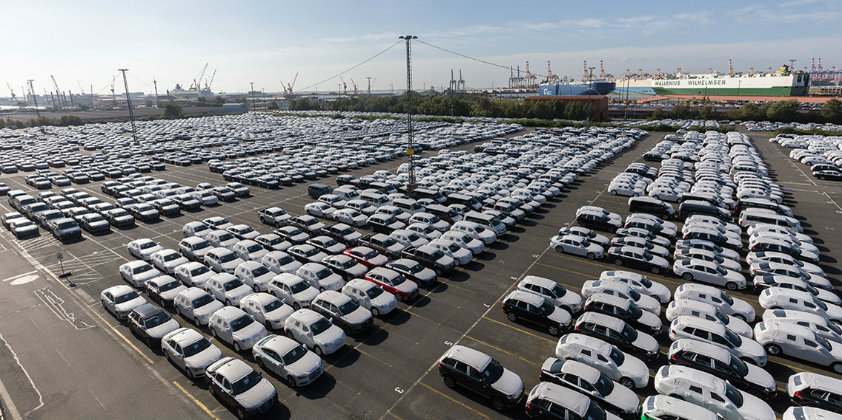With an IoT-powered tracking solution, managers now have access to huge amounts of previously invisible data which they can use to refine their supply chain operations
Since Toyota first pioneered its innovative Lean production system in the 1930s, the automotive industry has been a trailblazer in developing data-driven strategies to optimise manufacturing processes. With the integration of Lean and Six Sigma methodologies into every facet of the manufacturing process, OEMs and their suppliers have achieved incredible levels of efficiency and quality control. But until recently, manufacturers have struggled to mirror such quantitative optimisation on the supply chain side.
Historically, a lack of data has limited the extent to which supply chain managers could implement data-driven strategies. But today, new tools powered by the Internet of Things (IoT) are making it possible for the automotive supply chain to adopt many of the data-driven optimisation techniques pioneered in manufacturing.
In general, an IoT supply chain solution involves a wireless tracking system coupled with a cloud-based monitoring and analysis platform. Recent advances in cellular devices and network infrastructure have enabled multi-sensor cellular-connected trackers that can transmit all around the world and last up to six months on a single charge. This global coverage and long lifetime is vital for the modern, international supply chain.
Armed with an IoT-powered tracking solution that monitors the real-time location and condition of in-transit goods, managers now have access to huge amounts of previously invisible data, which they can use to incorporate a variety of data-driven methodologies into their operations.
First, an IoT solution can send alerts as soon as a problem occurs. Different sensors, for example, can send an immediate alert if a shipment of fragile automotive parts experiences harmful handling or if sensitive components experience a temperature excursion. Instead of waiting until goods arrive to discover such problems, the supply chain manager knows as soon as they occur, giving them time to reroute a replacement shipment, coordinate inspection and rework staff and make other proactive arrangements.
In addition to damage alerts, real-time location data and geofence notifications make it possible to predict exactly when a shipment will arrive. If an IoT system indicates that a shipment is going to arrive late or early, the manager can reschedule workers, order replacement shipments, or make other arrangements to avoid wasting time and resources at their facility. And that can mean huge cost-savings.
According to a recent EY report, carriers often charge OEMs as much as 50% more for last-minute orders, while a stalled production line due to supply chain disruptions can waste hundreds of thousands of dollars a day. With hundreds of suppliers and shipments arriving daily, the costs of ordering last-minute replacements or stopping production can quickly skyrocket. Advance warning that a shipment will show up damaged or late makes it possible to avoid such unplanned costs.
In addition to real-time alerts, IoT tools also provide comprehensive data sets that can be used for root-cause analysis of problems on a macro scale. For example, if tracker data indicates that above-average levels of damage occur on a particular route, the carrier can use an alternative route and avoid the issue. Or if tracker data shows that certain shipments consistently show up late, the manager can update their plans to reflect a more accurate schedule.
Access to data also makes it possible to perform quantitative SPC (statistical process control) analysis, in which every incoming data point is compared to historical averages and outliers are immediately identified and addressed. For example, SPC can determine whether delays are within reasonable bounds, or are significant enough to warrant investigation and mitigation. With comprehensive data, managers can implement Six Sigma methodologies to improve the reliability of every leg of the supply chain.
Finally, with real-time visibility over the location and condition of goods in transit, manufacturers can follow Lean best practices to reduce inventory, further reducing operational costs. When managers have confidence that delays will be identified with enough time to make alternate arrangements, it is no longer necessary to rely on excess safety stock to avoid outages. These Lean methodologies help companies reduce waste and cut costs across the board.
The era of the IoT
As more and more automotive manufacturers integrate IoT technologies into their supply chains, managers are reaching new levels of waste reduction and quality control. And this era of the IoT is arriving just in time. According to an IBM Global Supply Chain Benchmark Report, 79% of large enterprises say their top concern is the lack of critical supply chain process visibility, while a 2015 Deloitte study found that supply chain disruptions cost automotive OEMs $1 billion a year.
As the automotive supply chain grows more complex, the costs associated with inefficiency and unreliability rise. Now, more than ever, the effectiveness of a company’s supply chain has a direct and significant impact on the bottom line.
In the face of the ever-growing complexity of the modern supply chain, IoT tools and a data-driven mindset have become must-haves for the forward-thinking automotive supply chain manager.
Author – Dagny Dukach is the marketing manager at Tive, a provider of sensor-driven tracking solutions for the supply chain.
Courtesy of Automotive Logistics
























































